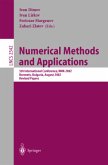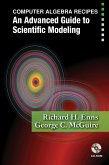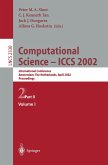U sing stochastic differential equations we can successfully model systems that func tion in the presence of random perturbations. Such systems are among the basic objects of modern control theory. However, the very importance acquired by stochas tic differential equations lies, to a large extent, in the strong connections they have with the equations of mathematical physics. It is well known that problems in math ematical physics involve 'damned dimensions', of ten leading to severe difficulties in solving boundary value problems. A way out is provided by stochastic equations, the solutions of which of ten come about as characteristics. In its simplest form, the method of characteristics is as follows. Consider a system of n ordinary differential equations dX = a(X) dt. (O.l ) Let Xx(t) be the solution of this system satisfying the initial condition Xx(O) = x. For an arbitrary continuously differentiable function u(x) we then have: (0.2) u(Xx(t)) - u(x) = j (a(Xx(t)), ~~ (Xx(t))) dt.








